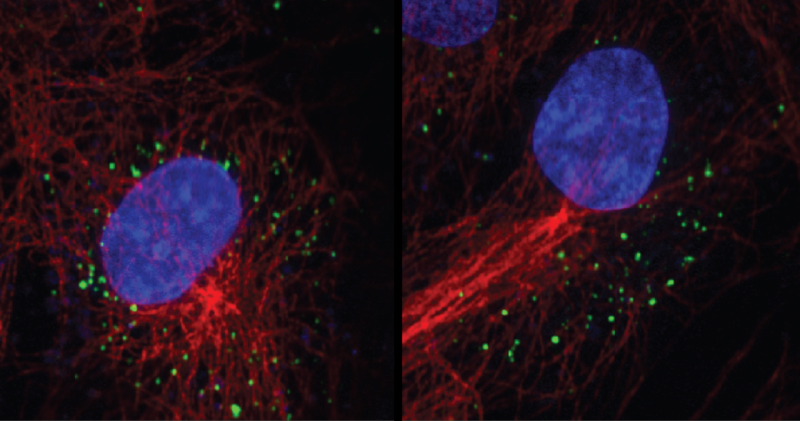HIV infection hijacks intracellular highways

A Northwestern Medicine study found the human immunodeficiency virus (HIV) uses proteins called diaphanous-related formins (DRFs) to hijack the cytoskeleton of healthy cells, findings that deepen the understanding of HIV infection and present a potential therapeutic target.
The paper was published in the Proceedings of the National Academy of Sciences and the lead author was Michael Delaney, PhD, a postdoctoral fellow in the lab of senior author Mojgan Naghavi, PhD, associate professor of Microbiology-Immunology.
The cytoskeleton, a network of interlinking filaments and tubules that gives structure to a cell and helps facilitate intracellular transport, has two important components—actin and microtubules. DRFs are involved in the regulation of both and HIV exploits discrete functions of DRFs to commandeer the functions of the cytoskeleton in a coordinated attack, according to the study.
"The virus has evolved to mimic these two regulatory functions of DRFs," said Naghavi, also a member of the Robert H. Lurie Comprehensive Cancer Center of Northwestern University.
Many viruses depend on microtubules to navigate through a cell, being too large to passively diffuse freely within the cytoplasmic environment. Instead, they require active transport to the nucleus where viral replication can begin.
"The virus exploits the regulatory function of DRFs, stabilizing the microtubules," Naghavi said. "Usually the microtubules are highly dynamic, but when they are stabilized, they can function as highways to transport the virus to the nucleus."
HIV also binds to DRF to regulate the disassembly of its capsid, a large protein shell that surrounds the HIV genome (a process also known as uncoating). While in uninfected cells DRFs have dual functions that coordinate actin and microtubule dynamics, HIV exploits these multifunctional DRFs to coordinate its uncoating with trafficking on stable microtubules to reach the nucleus, according to the study.
"Before we published this, it was unknown that they worked together," Naghavi said. "HIV is the only retrovirus we've tested so far that does this."
While previous studies had shown the virus somehow influenced microtubules, definitively identifying that pathway presents an opportunity for further study.
"Now, we are interested in factors up or downstream from DRFs," Naghavi said. "There are a handful of factors like DRFs that track microtubules, but nobody has looked at these factors and how they regulate viral infection."
Mapping the pathway would provide targets for intervention during early infection, according to Naghavi, but any treatment would have to tread lightly.
"The ultimate goal is being able to pinpoint the interaction between HIV and DRFs without affecting the normal function of the DRFs," she said. "It's an area that's never been explored before."
More information: Michael Keegan Delaney et al. Distinct functions of diaphanous-related formins regulate HIV-1 uncoating and transport, Proceedings of the National Academy of Sciences (2017). DOI: 10.1073/pnas.1700247114




















